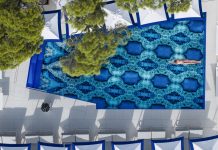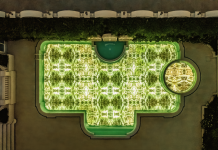To extend the lifetime of a product, by reusing at least some of its parts, means to put off its decay and transformation into garbage to be disposed of, at least for a while. It is a concrete measure which, by adding another phase to the life cycle of objects, represents an initial change in the models of production and consumption in the direction of sustainability. At the same time an object made from reusable parts represents a small contribution in the process of transition towards a new aesthetics of the industrial product, which replaces the principles of programming and standardization, which has governed the concept of quality for decades, with those of unpredictability and diversity. It is precisely for these ideological and practical reasons that that of giving objects a second life is one of the favourite paths chosen by contemporary design experimentation. While it is a matter of an approach with interesting potentials, it may also give rise to as many perplexities. Objects featuring reused parts are still, for the most part, perceived as somewhat unattractive, an expression of the most threatening aspects of environmentalism, the one associated with an idea of privation, pauperism and anti-hedonism. However, if we retrace the origins of the practice of design assemblage, we cannot but come across figures as that of Achille Castiglioni, who on the contrary is a spokesman for the most cheerful and playful creations that contemporary design can offer. This side of Castiglioni’s approach was expressed in the very first known project of his: a student’s work from 1940 which he made while attending the Milan Polytechnic. Despite the solemnity of the theme, the design of a local Fascist centre of culture, the model was realized in something as prosaic as two pieces of cheese, which represented the regular built volumes; the openings on the façade corresponded, more or less, with the holes of the Gruyère cheese.
It is a well-known fact that after this promising debut Castliglioni’s whole career has continued with the magic of the acrobat, through new juxtapositions that are still among the best specimens of Italian design: bicycle seats turned into unstable chairs, rough tractor seats become elegant stools for the home, headlights from a compact car used as floor lamp for the sitting room. There are no limits to his irony; he plays with references to small, everyday objects, as the pudding forms transformed into the crown of a felt hat for Borsalino, but also to some of the most famous masterpieces of art history, as the Altarpiece which hangs at the Brera Picture Gallery, by Piero della Francesca, who could not possible have imagined, in 1472, that his efforts to synthesize the perfect shape of the egg, at one time the idea of nascent life and the geometric centre of the perspective construction, could be transformed into a more prosaic lighting apparatus which is also named after his painting: the Brera lamp.
The idea of approaching design as an operation of re-assembly, by taking parts from one world and transfer them into another, has then been expanded upon and perpetuated by others. In the Nineties Droog Design achieved success precisely thanks to a series of objects which hovered between industrial production and artistic expression, where cross-references and migration of parts from one area to another represent the inspiring concepts. One of the very first icons of the Dutch group is a kind of critical manifesto against the incessant process of consumption of objects: Chest of Drawers by Tejo Remy of 1991, where the designer has succeeded in turning the very concept of chance into an object. A collection of recycled drawers of different dimensions, geometries and origins have been stacked casually, held together by a simple belt of jute. We may conclude the comment on Droog Design by mentioning the Tree-trunk bench by Jurgen Bey, a piece where the author has carried the concept to extremes; as the horizontal part of the chair consists of a tree trunk, the only part which is actually produced and sold (as everyone may then add his or her own trunk) is the three bronze casts of classical chair backrests.
To exemplify the current dimension of reuse we may finally mention two specimens where the focus is shifted from the single result of the design assemblage to the strategic creative process of an infinity of possible solutions, and where the attention is focused on the concept of manufacturing. The first is a project developed during the Beijing Design Week 2013, in which the Dutch designer Sander Wassink launched the Dashilar Flagship Store, where he in cooperation with local craftsmen and designers cut and re-stitched old shoes, creating shoes made from old pieces. The other project is Transparent Tools by a young designer, Thomas Thwaites. It is a matter of a design which redefines the way we buy small household appliances. The appliances are not actually bought, but self-produced. Every object is only sold in the form of simple assembly schemes, described on sheets of paper. These instructions contain a breakdown of the different parts, with research strings for parts which may be bought directly from eBay and links for downloading models for three-dimensional or 3D printing through self-production processes. The design instructions are written so as to take for granted that the buyer will adapt the product. In the case of the boiler, for example, the recycled glass carafe may be replaced by a ceramic jug, by a metal thermos or by another heat-resistant container which fits the lid printed by the 3D printer; or the latter may be altered so as to suit another container.













